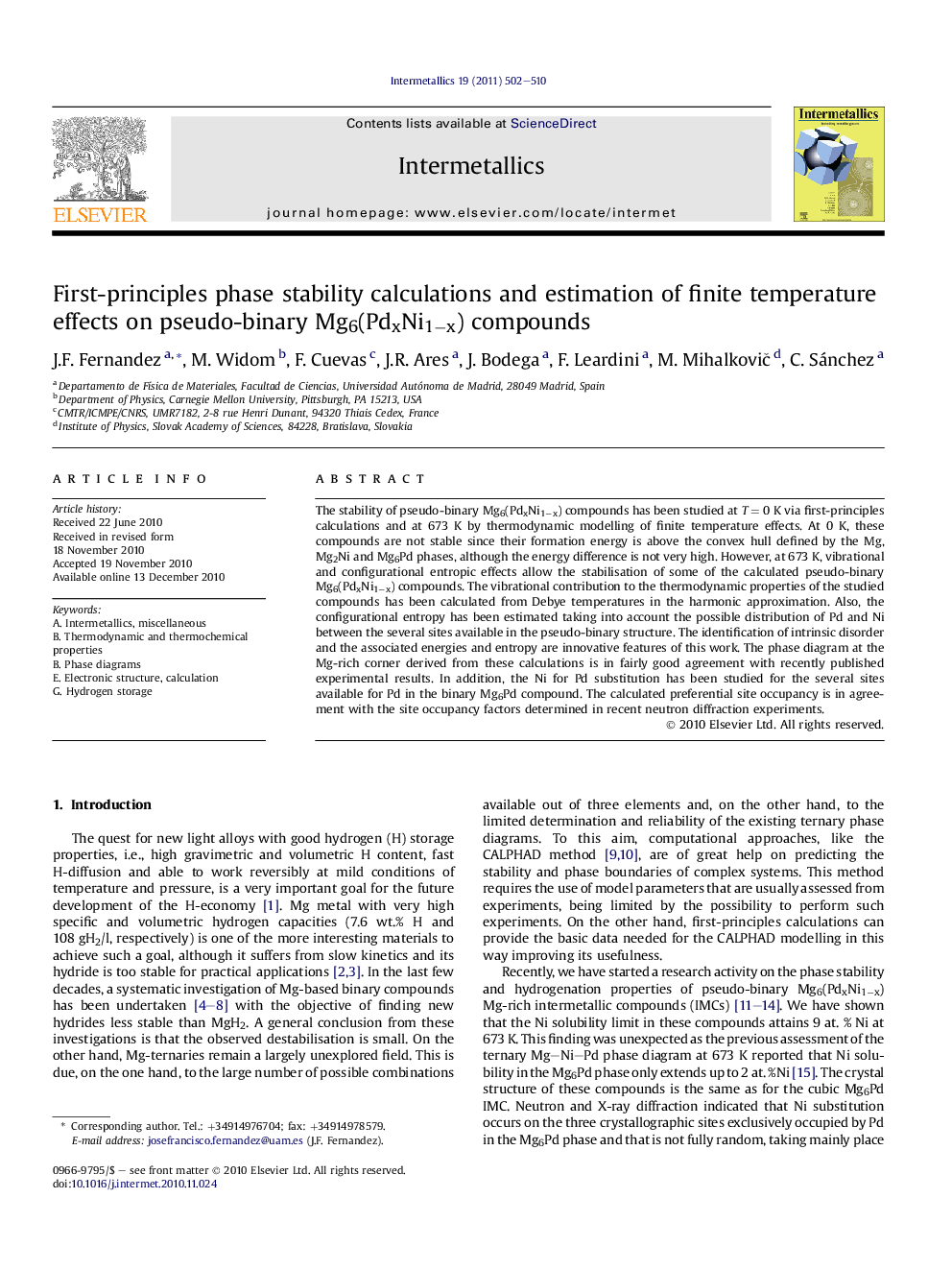| Article ID | Journal | Published Year | Pages | File Type |
|---|---|---|---|---|
| 1600715 | Intermetallics | 2011 | 9 Pages |
The stability of pseudo-binary Mg6(PdxNi1−x) compounds has been studied at T = 0 K via first-principles calculations and at 673 K by thermodynamic modelling of finite temperature effects. At 0 K, these compounds are not stable since their formation energy is above the convex hull defined by the Mg, Mg2Ni and Mg6Pd phases, although the energy difference is not very high. However, at 673 K, vibrational and configurational entropic effects allow the stabilisation of some of the calculated pseudo-binary Mg6(PdxNi1−x) compounds. The vibrational contribution to the thermodynamic properties of the studied compounds has been calculated from Debye temperatures in the harmonic approximation. Also, the configurational entropy has been estimated taking into account the possible distribution of Pd and Ni between the several sites available in the pseudo-binary structure. The identification of intrinsic disorder and the associated energies and entropy are innovative features of this work. The phase diagram at the Mg-rich corner derived from these calculations is in fairly good agreement with recently published experimental results. In addition, the Ni for Pd substitution has been studied for the several sites available for Pd in the binary Mg6Pd compound. The calculated preferential site occupancy is in agreement with the site occupancy factors determined in recent neutron diffraction experiments.
Graphical abstractFigure optionsDownload full-size imageDownload as PowerPoint slideResearch highlights► First-principles DFT calculations have shown that pseudo-binary Mg6(PdxNi1−x) compounds are not stable at 0 K against the Mg, Mg2Ni and Mg6Pd phases. ► Vibrational and configurational entropic effects allow the stabilisation of some of the calculated pseudo-binary Mg6(PdxNi1−x) compounds at high temperature. ► The predicted phase diagram at the Mg-rich corner is in fairly good agreement with recently published experimental results. ► Site occupancy of Ni in the pseudo-binary compounds is in perfect agreement with the experimental findings.
